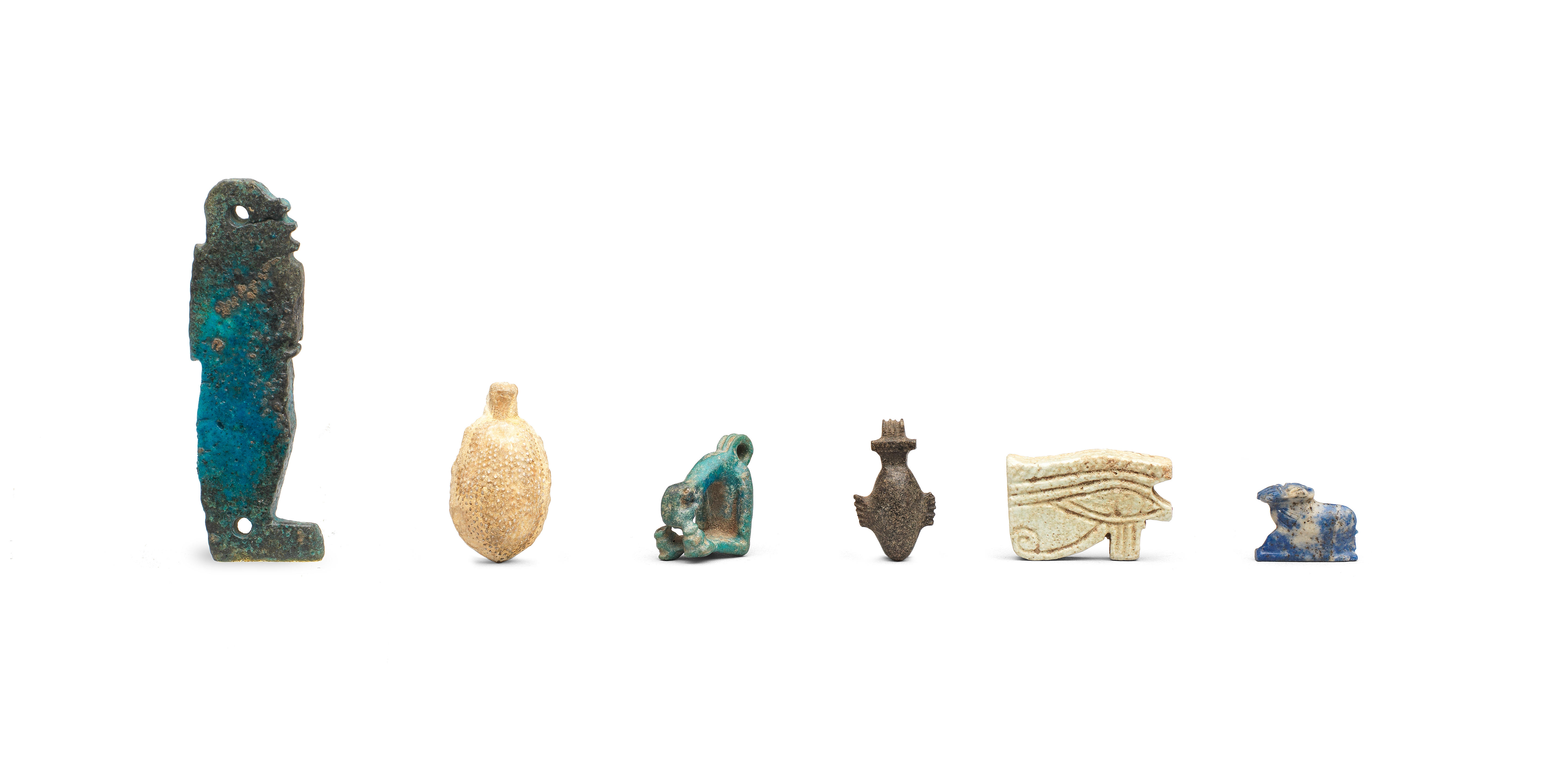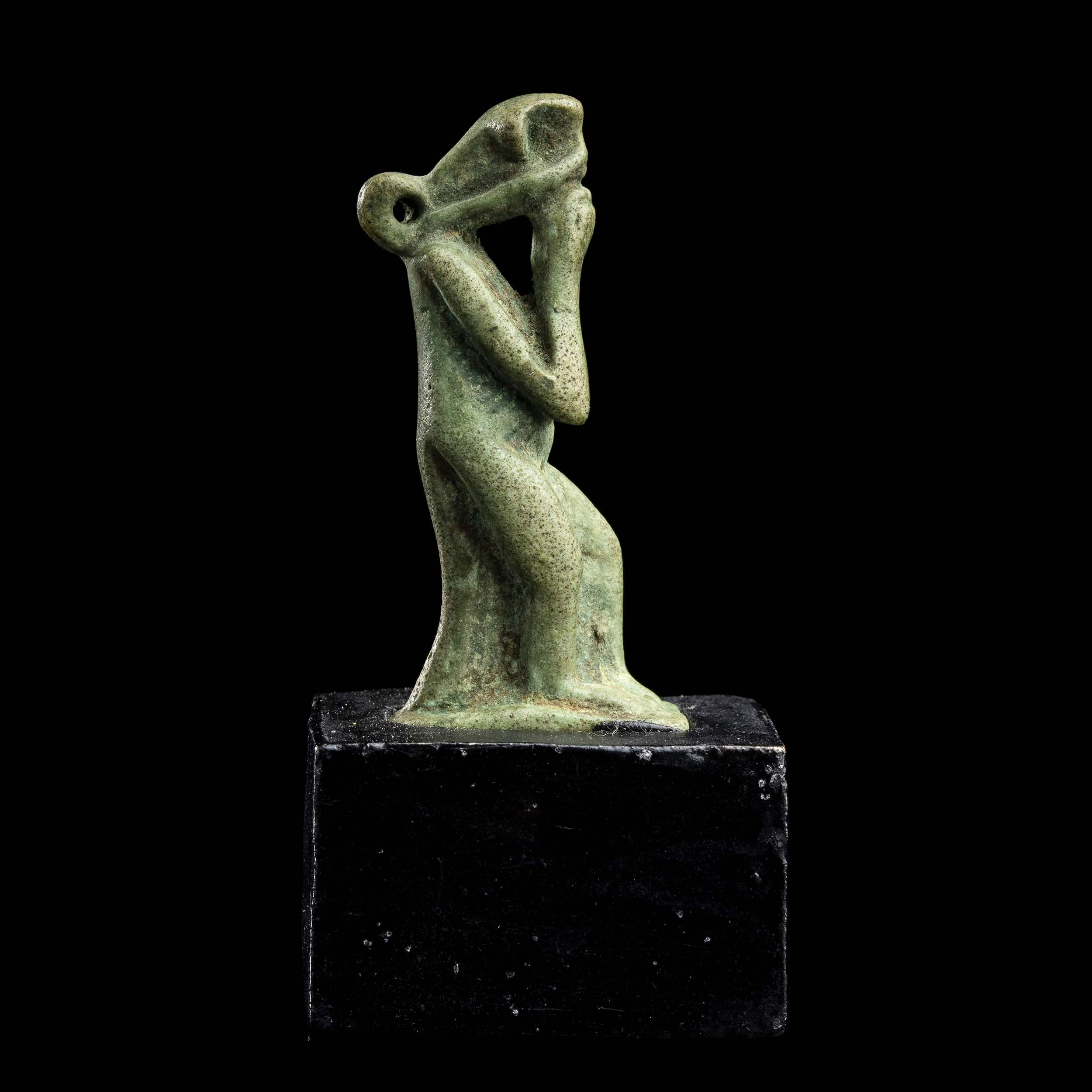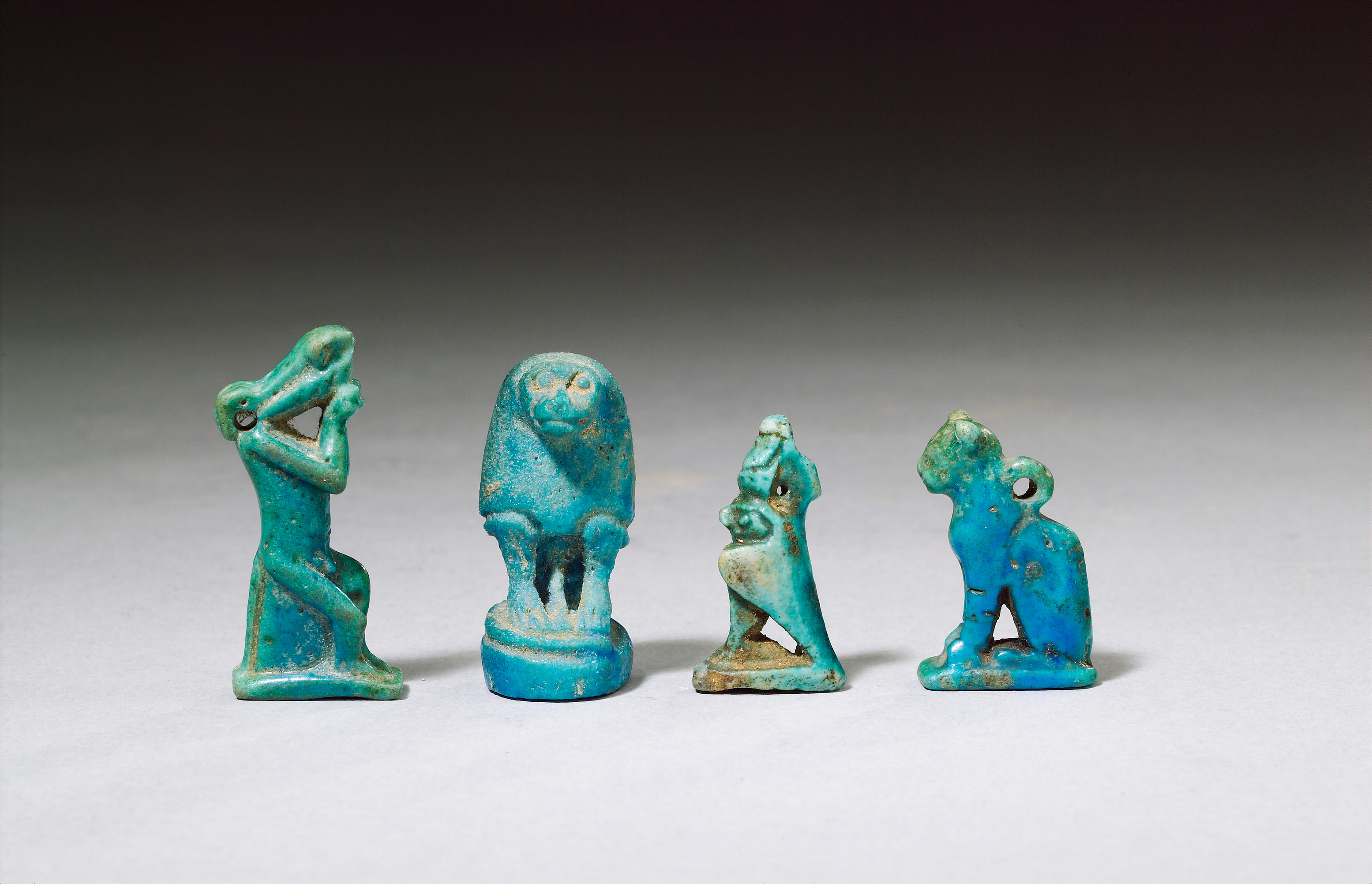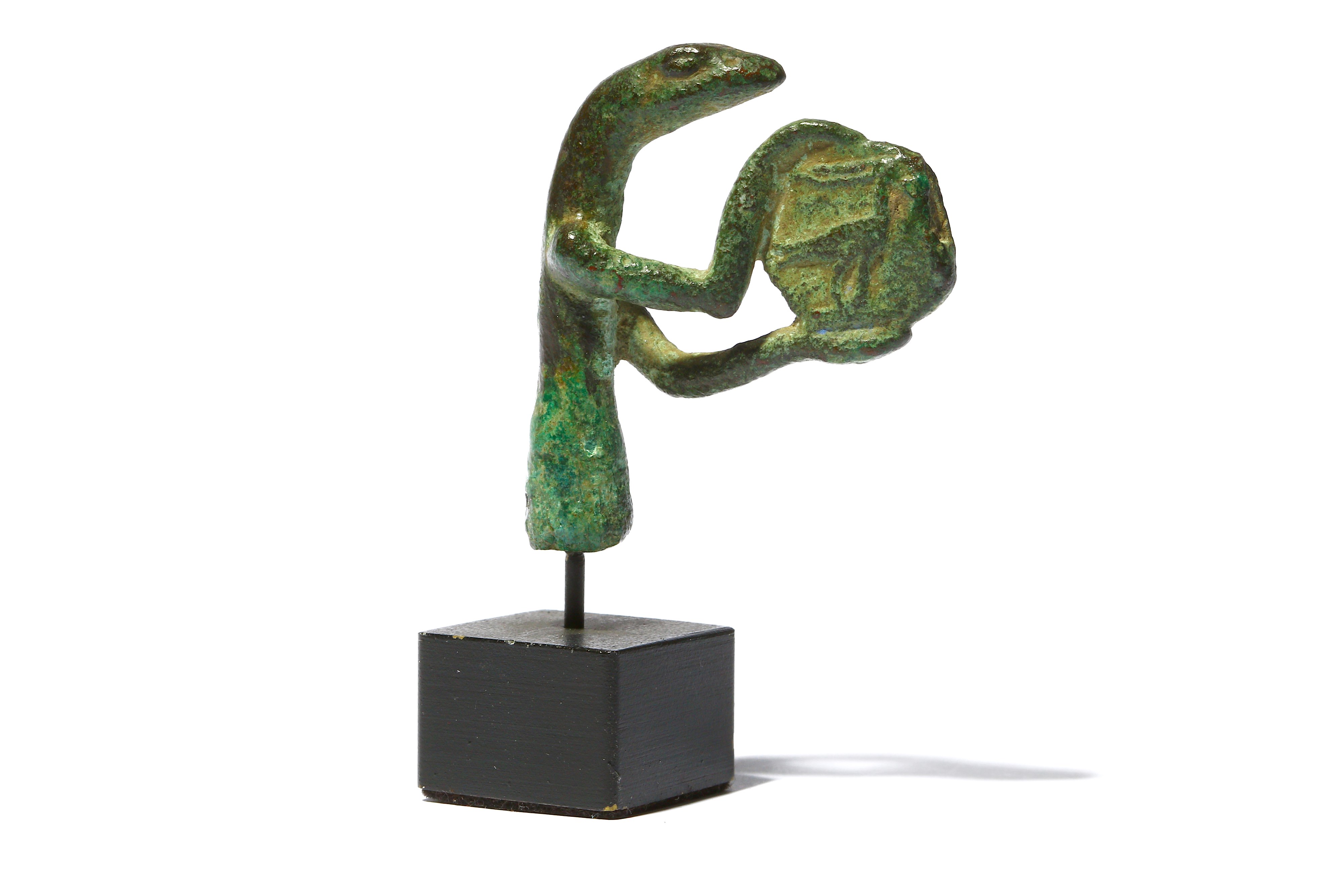EGYPTIAN NEHEBKAU AMULET Third Intermediate Period, 1070-664 BC A large high quality glazed composition amulet of the god Nehebkau in the form of a snake with human body, arms and legs and with snake tail, hands held up to mouth, legs bent; suspension loop to the back of the neck; mounted on a custom-made stand. 6.79 grams total, 45mm including stand (1 3/4"). Condition Very fine condition. Provenance Property of a Connecticut, USA, collector; formerly in the collection of Dr. John Winnie, St. Mary's, Georgia, USA. Literature For a similar amulet see The Art Institute of Chicago, accession number 1892.224. Footnotes Nehebkau, whose name means 'He Who Unites the Ka', was a benevolent snake god who the Egyptians believed was one of the original primeval gods. He was linked to the sun god, swimming around in the primeval waters before creation, then bound to the sun god when time began. He was a god of protection who protected the pharaoh and all Egyptians, both in life and in the afterlife. He was depicted in the form of a snake with arms and legs, occasionally with wings. He is sometimes shown holding containers of food in his hands, in offering to the deceased. Less often, he is shown as a two headed snake, with a head at each end of the reptilian body. His name implies that he is the one that brings together the ka - the double or soul of a person, an animal, a plant, a body of water or even a stone - and unites the double with the physical body that the ka would reside in, be it an animate or inanimate object. In life, Nehebkau was invoked by the people to protect them from and cure them of venomous bites. The Egyptians believed that he swallowed seven cobras (seven was a magical number to the ancient Egyptians), using them for his magical power. It was believed that he was one of the gods who announced the new pharaoh to the rest of the gods, at the beginning of the new pharaoh's rule. After death, it was Nehebkau who protected and fed the pharaoh, offering food and water to the other justified dead. The drink was known as the 'Milk of Light', magical liquid that would heal the deceased had they been bitten by a poisonous animal. He was one of the forty two gods in the Halls of Ma'at, who helped to judge over the deceased. Amulets of him would have been placed on the mummy to help the soul on its journey to the afterlife, as well as bind the soul to the body so that it could return on the day of resurrection.
EGYPTIAN NEHEBKAU AMULET Third Intermediate Period, 1070-664 BC A large high quality glazed composition amulet of the god Nehebkau in the form of a snake with human body, arms and legs and with snake tail, hands held up to mouth, legs bent; suspension loop to the back of the neck; mounted on a custom-made stand. 6.79 grams total, 45mm including stand (1 3/4"). Condition Very fine condition. Provenance Property of a Connecticut, USA, collector; formerly in the collection of Dr. John Winnie, St. Mary's, Georgia, USA. Literature For a similar amulet see The Art Institute of Chicago, accession number 1892.224. Footnotes Nehebkau, whose name means 'He Who Unites the Ka', was a benevolent snake god who the Egyptians believed was one of the original primeval gods. He was linked to the sun god, swimming around in the primeval waters before creation, then bound to the sun god when time began. He was a god of protection who protected the pharaoh and all Egyptians, both in life and in the afterlife. He was depicted in the form of a snake with arms and legs, occasionally with wings. He is sometimes shown holding containers of food in his hands, in offering to the deceased. Less often, he is shown as a two headed snake, with a head at each end of the reptilian body. His name implies that he is the one that brings together the ka - the double or soul of a person, an animal, a plant, a body of water or even a stone - and unites the double with the physical body that the ka would reside in, be it an animate or inanimate object. In life, Nehebkau was invoked by the people to protect them from and cure them of venomous bites. The Egyptians believed that he swallowed seven cobras (seven was a magical number to the ancient Egyptians), using them for his magical power. It was believed that he was one of the gods who announced the new pharaoh to the rest of the gods, at the beginning of the new pharaoh's rule. After death, it was Nehebkau who protected and fed the pharaoh, offering food and water to the other justified dead. The drink was known as the 'Milk of Light', magical liquid that would heal the deceased had they been bitten by a poisonous animal. He was one of the forty two gods in the Halls of Ma'at, who helped to judge over the deceased. Amulets of him would have been placed on the mummy to help the soul on its journey to the afterlife, as well as bind the soul to the body so that it could return on the day of resurrection.















Try LotSearch and its premium features for 7 days - without any costs!
Be notified automatically about new items in upcoming auctions.
Create an alert